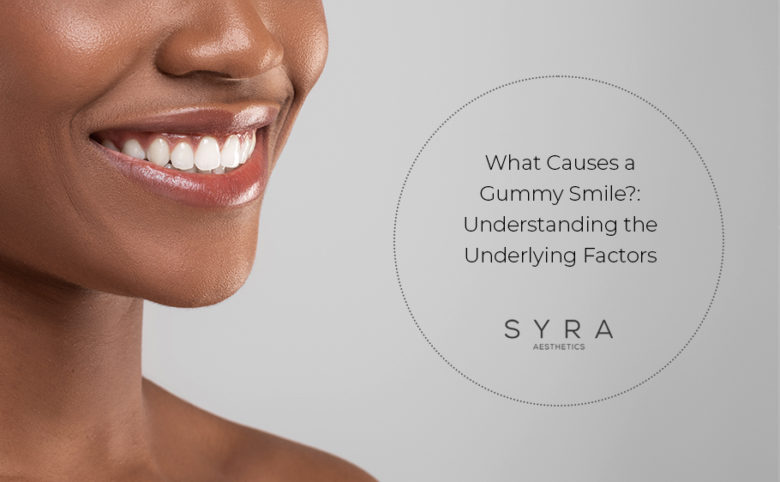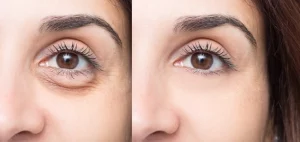Have you ever noticed that your gums appear out of proportion to your smile when you look at a photo of yourself? If so, you can have a condition called the excessive gingival show, sometimes known as a Gummy smile.
The issue is treatable, which is good news. With just one trip to the dentist, you can have the smile of a movie star.
Today, we’ll discuss what causes a Gummy smile, the available remedies, and how a lip flip can enhance your smile further.
What is a Gummy Smile
A deformity known as the gingival (Gummy) smile is characterized by overreaching the upper gums while smiling. It happens when the ratios of the teeth and gums are out of balance. The severity of a Gummy smile varies depending on the size of the gum displayed:
Mild: Gum is present in the two to four-millimeter range.
Moderate: Four to six millimeters of gum are visible when smiling.
Extreme: when smiling, more than six millimeters of gum are visible.
Symptom severe Gummy smile
The issue might have symptoms severe gummy smile. When you smile, it will appear as a tiny gap between your gums and teeth. Although this is not a serious disease, before you go out in public, you should be aware of how it affects your appearance.
Among the signs of a Gummy smile are some of the following:
The amount of smiling may affect the size of the space between the gum and teeth. When you smile widely, the gap will be wider than usual, making it more obvious.
The space between your gums and teeth may make your smile appear less beautiful. If there is a large gap between them when you smile widely, it may make them appear crooked or uneven.
What causes a Gummy smile
Various factors cause a gummy smile, and almost every cause of a gummy smile is discussed here.
1. Differences in the growth of your teeth
A Gummy smile may occasionally result from how your adult teeth erupt. Even though this differs from person to person, a tiny study from 2014 indicated that it might be a familial trait.
A Gummy smile could have resulted from the altered passive eruption, a condition where your gums covered more of the surface of your teeth when they first emerged.
Your gums may have expanded excessively if the teeth in the front of your mouth erupted or grew too far. Dentoalveolar extrusion is the medical term for this ailment.
Vertical maxillary excess, another issue, can also cause a Gummy smile. This occurs when the bones in your upper jaw enlarge relative to their normal size.
2. Lip differences
Your top lip may become sticky when it is on the shorter side. Also, if your lips are hypermobile—if they smile dramatically—they may expose more of your gum line.
3. Medications
Certain drugs might make the gums around your teeth swell excessively. The term for this is gingival hyperplasia.
Gum overgrowth may be brought on by medications that treat high blood pressure, inhibit the immune system, or prevent seizures.
In this situation, it’s crucial to take care of the illness. Clinical gum overgrowth can cause periodontal disease if left unchecked.
4. Genetics and Anatomy
Hereditary gingival fibromatosis is a rare genetic disorder linked to gingival hypertrophy.
This disorder is distinguished by the gum tissue’s gradual expansion, which often starts in childhood and lasts until age.
You can reduce the impact of hereditary gingival fibromatosis by correcting your Gummy smile.
Most patients’ Gummy smiles are caused by heredity, most commonly by a combination of a big jaw, small teeth, and a short upper lip.
Rarely, a disorder known as hereditary gingival fibromatosis (HGF), a gradual but progressive development of keratinized gingiva that frequently becomes severe enough to impair speech, can be the source of Gummy smiles.
Gummy smiles can also result from changes in your body’s anatomy, including hormonal imbalances brought on by pregnancy or puberty. Gingival enlargement can also be brought on or worsened by blood diseases like leukemia.
5. Health Factor
You must take care of your mouth’s other components to protect your teeth. Plaque can penetrate the gums, cause them to swell, and become inflammatory when it accumulates on your teeth. It’s yet another reason you should adhere to the five habits for strong teeth and gums that we outline in our guide to caring for teeth.
Poor dental hygiene is a direct cause of Gummy smiles and braces. Brushing and flossing can be more difficult for patients with traditional braces because the braces create an impediment. After that, bacteria accumulates in and around the gums, resulting in swelling and a Gummy smile.
Gum disease patients frequently delay brushing and flossing the affected area because it hurts, which creates a cycle of bad dental hygiene.
6. Altered Tooth Eruption
Tooth eruption, despite seeming like a major volcanic event, is the gradual process of teeth slowly pushing through the gums and visibly erupting in the mouth. This occurs for permanent molars around the age of 6. Alternate passive eruption refers to the condition in which some teeth occasionally fail to erupt normally (APE).
APE can make a person’s smile look “gummy” because one or more teeth are only partially exposed in the mouth due to the condition. While it is not generally regarded as a health issue, it can affect how someone smiles.
How to fix a Gummy smile
The best technique to correct a Gummy smile depends on the original cause. The following common procedures can be used as treatment, depending on the underlying cause. There are multiple ways to get rid of gummy smile and some of the methods are given below:
Botox
Botulinum toxin injections, often known as Botox, may be effective if your Gummy smile is caused by your lips moving too high over your gum line when you smile.
In a 2016 studyTrusted Source, 23 ladies with Gummy smiles had the elevator muscles in their lips paralyzed with a Botox injection. 99.6% of the women saw a change in their smiles after two weeks.
Compared to surgery, botox is less expensive and less invasive. The average price per injection is $397.
The negatives? The shots must be repeated every three to four months. Also, there’s a chance that your doctor will administer too much Botox, distorting your smile.
Hyaluronic Acid
Injections of hyaluronic acid fillers are another method to momentarily fix a Gummy smile brought on by hypermobile lips. For up to 8 months, the fillers prevent the lip’s muscle fibers from moving.
It’s crucial to remember that injecting fillers carries some risk. Despite the rarity of difficulties, it’s possible that.
Your body’s immune system could react to the hyaluronic acid and form a nodule or granuloma. Your blood supply could be harmed, resulting in tissue loss, blindness, or stroke.
Hyaluronic acid fillers are less expensive than surgical treatments, often costing $682 per vial.
Conclusion
A Gummy smile is when more of your gum line is visible than you’d like. Other names for it include an excessive gingival display.
There are various ways to fix a Gummy smile if it’s lowering your self-confidence or you’re worried about the condition of your gums.
Many types of treatment are more expensive and invasive than others. Ask Syra aesthetics which procedures would be most beneficial for you.
Regardless of whether you opt to change the appearance of your gums, remember that when you smile, the world is happier.

About The Author
Dr. Syra Hanif M.D.
Board Certified Primary Care Physician
Dr. Hanif is the Director of Aesthetic Medicine. She is a board-certified physician in Aesthetic Medicine who specializes in using non-surgical alternatives in order to enhance one's appearance through Botox and fillers.
Read More











